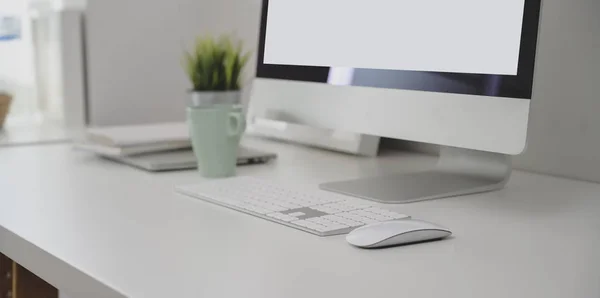In today’s fast-paced world, the office environment has become more dynamic than ever before. Gone are the days when a simple wooden desk and a chair were enough to create a functional workspace. Discover the latest office table designs that combine style and functionality. From modern and minimalist to elegant and ergonomic, explore a wide range of options to suit your workspace aesthetics. With the rise of technology and changing work styles, choosing the right office table has become a crucial decision for businesses and individuals alike. In this blog, we will provide you with a complete guide for selecting the perfect office table that meets your specific needs.
Determine Your Requirements
Before diving into the world of office tables, it’s essential to identify your specific requirements. Consider the following factors:
Purpose:
What will be the table’s main purpose? Will it be for a receptionist, executive, or employee? Will it be used for meetings or individual work?
- Size:
How much space do you have available? Measure the area where the table will be placed to ensure it fits comfortably.
- Shape:
Rectangular, square, or round? Choose a shape that suits your workspace and provides ample surface area for your needs.
- Material:
Wood, glass, metal, or laminate? Select a material that aligns with your style preference and budget.
- Storage:
Do you require storage solutions such as drawers, shelves, or cabinets? If so, consider a table with built-in storage options.
- Budget:
How much are you willing to spend on an office table? Budget carefully and don’t go over your allotted amount.
Consider Ergonomics
Ergonomics refers to designing and arranging things in such a way that they are comfortable and safe for people to use. When selecting an office table, consider the following ergonomic factors:
- Height:
The ideal height for an office table is between 29 inches and 30 inches (73 cm to 76 cm) from the floor. This height allows users to sit comfortably with their feet flat on the floor and their knees bent at a 90-degree angle.
- Depth:
The depth of the table should be around 24 inches (61 cm) from the back of the chair to the front edge of the table. This depth provides ample space for users to move their arms and legs comfortably.
- Width:
The width of the table should be sufficient to accommodate all necessary equipment and documents while allowing ample space for user movement. A standard width is around 36 inches (91 cm).
- Angle:
The table’s surface should be level and free from any slopes or angles that may cause discomfort or strain on users’ wrists and arms.
Evaluate Durability and Maintenance Requirements
The durability and maintenance requirements of an office table are essential factors to consider before making a purchase. A sturdy and long-lasting table will save you money in the long run by avoiding frequent replacements or repairs. Additionally, consider how easy it is to clean and maintain the table over time. Here are some factors to consider:
- Material:
Select a material that is simple to clean, long-lasting, and resistant to deterioration. For instance, laminate tables are scratch-resistant and easy to clean while wooden tables require regular maintenance such as polishing and oiling.
- Weight Capacity:
Ensure that the table can support the weight of all necessary equipment and documents without wobbling or bending under pressure. Check the weight capacity before making a purchase.
- Warranty:
Look for tables with warranties that cover any manufacturing defects or damages during transportation. This warranty will provide peace of mind and protect your investment in case of any issues with the product.
Evaluate Style Preferences
The style preference of an office table is subjective and depends on personal taste as well as the overall aesthetic of your workspace. Consider factors such as color, finish, design elements, and brand reputation when selecting an office table that aligns with your style preferences:
Color:
Choose a color that complements your workspace’s overall color scheme while providing contrast for easy readability of documents or screens. Neutral colors such as black, white, or gray are versatile options that can match any decor style.
- Finish:
Consider whether you prefer a glossy or matte finish for your office table’s surface. Glossy finishes provide a sleek look while matte finishes offer a more subtle appearance. Additionally, some finishes may require more maintenance than others; therefore, choose one that aligns with your cleaning preferences as well as budget constraints.
- Design Elements:
Look for tables with unique design elements such as curved edges or asymmetrical shapes that add visual interest to your workspace while providing functionality at the same time. Some tables may also feature built-in charging ports or cable management systems that enhance productivity by keeping cables organized and out of sight.
- Brand Reputation:
Research reputable brands in the market known for producing high-quality office furniture that meets industry standards for durability, functionality, and design excellence. Reading customer reviews can also provide insight into their experiences with specific brands before making a purchase decision.
Conclusion
Choosing the right office table requires careful consideration of various factors such as requirements, ergonomics, durability/maintenance requirements, style preferences, and budget constraints. By following this guide, you can make an informed decision that meets your specific needs while enhancing productivity in your workspace at large.
Read More ( Click Here )


